Claws and jaws. I’m concerned about both. I only see one. Claws. Not friendly, little kitty-cat claws. These are fear-inducing grizzly bear claws and I’m holding them. I’m not crazy or bold. I’m on assignment and the bear is out cold. The sleepy-time shot to its shoulder has it under a spell that makes it possible for me to safely shoot close-ups while researchers examine the 4-year-old and its beast of a body. Sounds like a bucket list opportunity, but hang on.
Honestly, it stinks.
“Grizzly bear trapping, it’s not pretty,” says Curtis Hendricks, Idaho Department of Fish and Game regional wildlife manager. “To get bears to a site, essentially it’s all about stink.”
The stink is rotting fish guts dripping down the tree trunk behind me and sun-cooked, road kill elk steaming in the dirt next to me. Flies are feasting and so was the bear until the shoulder poke that put it down with its claws still out.
A bear’s teeth are tucked in when it sleeps, but its claws are always out. That’s probably why I take so many pictures of claws. They don’t retract like a cat’s. It’s like trying to pal around with Wolverine when he’s mad. Blades out and ready. The visual intensity makes my hands shake, but I work through it. At least I think I do. Most of my shots are steady while I lay on my belly nose-to-nose with grizzly No. 1225. His breathing is slow and deep. Mine is quick and shallow. My hyped rhythm quickens to hysteria when the bear’s eyelid flips open.
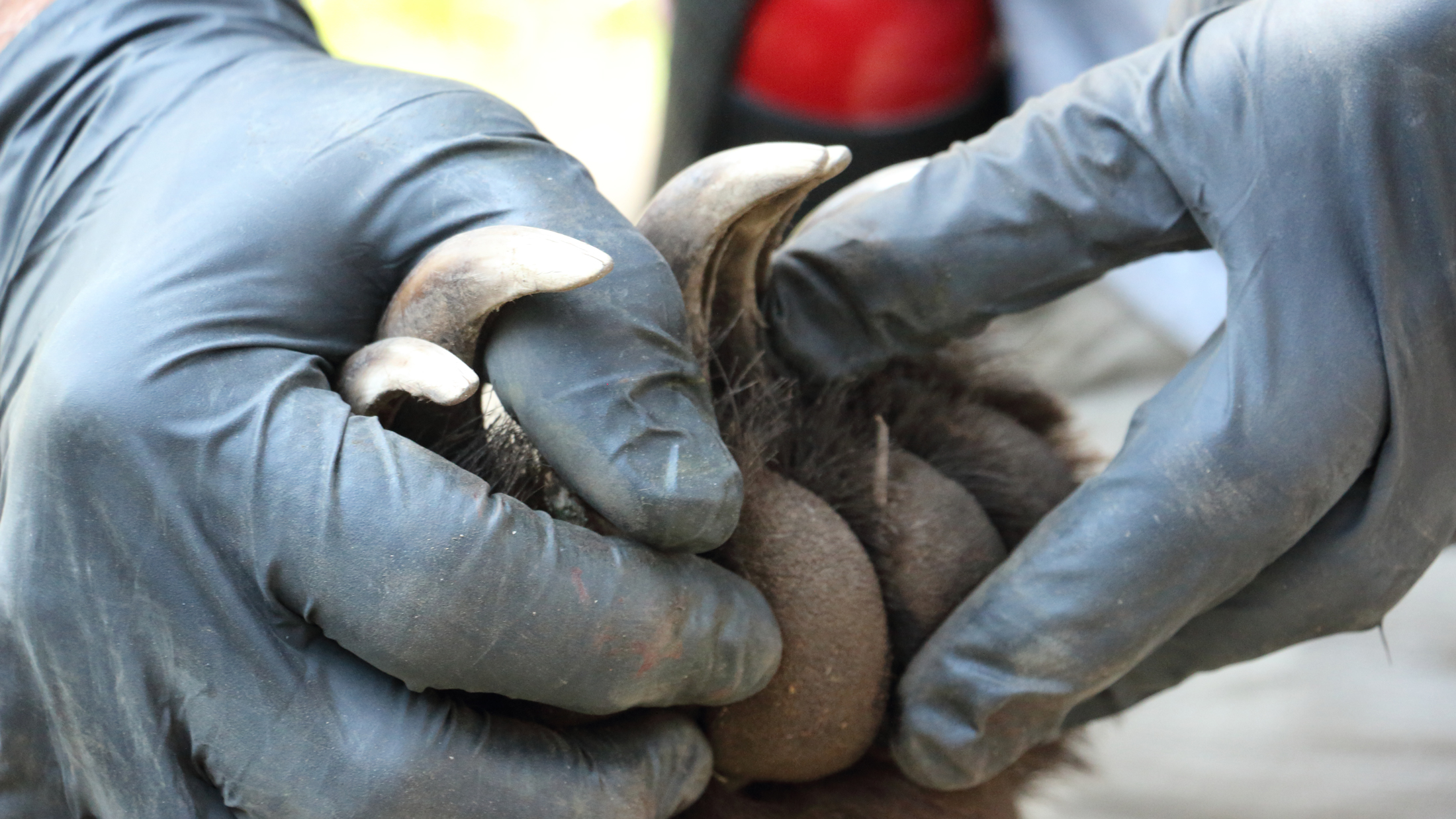
“He’s up!’ I say.
Eye twitch is normal I’m told. The tranquilizer, which lasts 45 minutes, wears off from nose to toes. The ticker tells us we still have 10 minutes. Just enough time to put on the trackable GPS collar so I keep working on footage. Via lens, I admire the bear’s coat, a beautiful rug of caramel cream and silver sheen.
“Really good body condition. Really good muscle mass on him,” Hendricks says. “He’s the perfect example of what a young male grizzly bear should look like in quality habitat. Beautiful bear.”
I’m filling frame with the beautiful bear’s signature shoulder hump when the bear lifts its head. I lift my head in alarm.
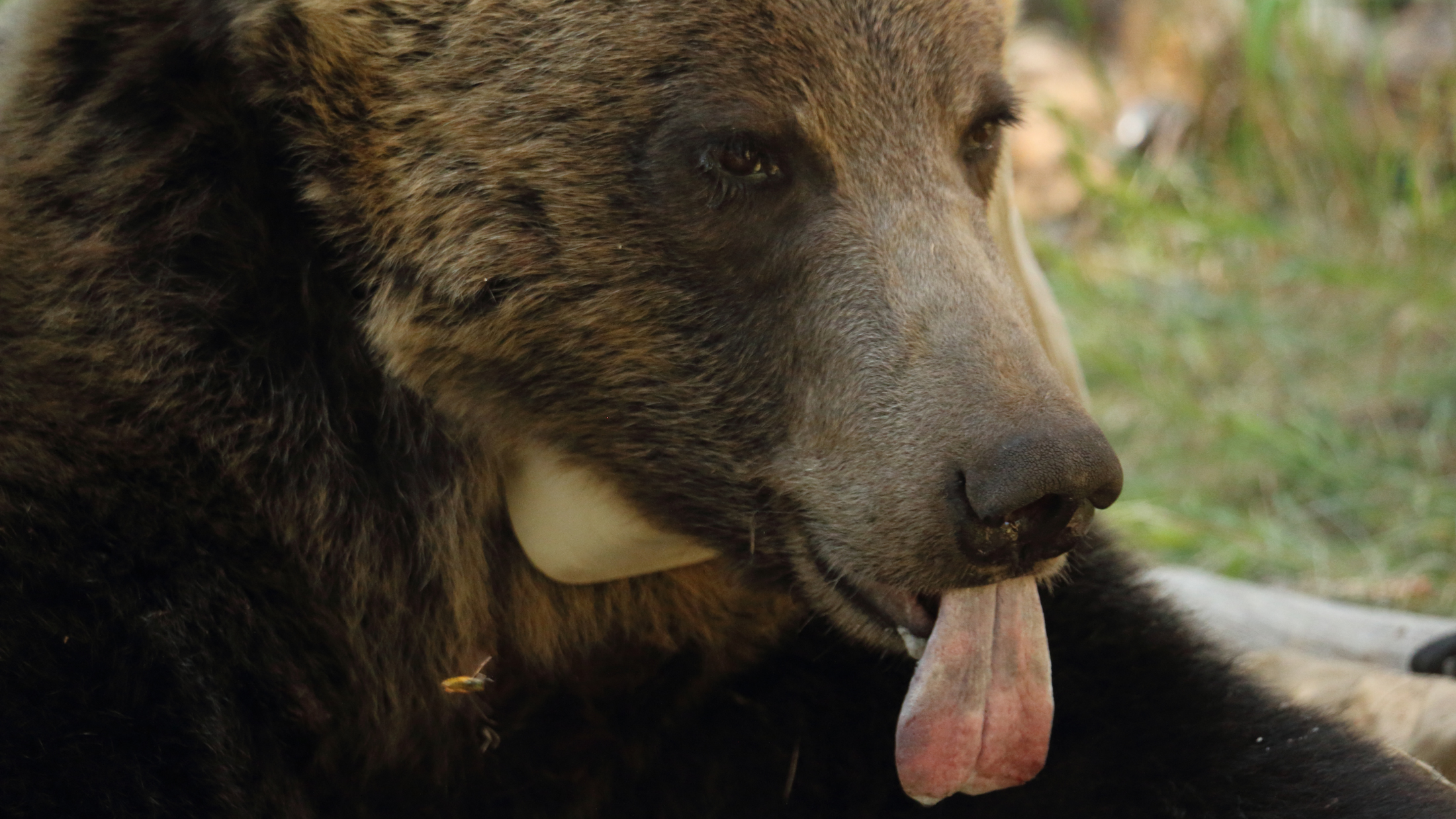
“No!” I say. “He’s really up.”
I rise up on my arms. The bear rises up on its arms. At this point, I turn into a 4-year-old too. I want, with all my heart, to play follow the leader. If I stand, the bear will stand so let’s not do that. Let’s lay back down and close our eyes. I fold my arms and flatten my body onto the tarp that is the makeshift operating table on the forest floor. The bear doesn’t follow my lead. I’m down and it’s still up, head rolling, tongue lobbing, nose sniffing.
“Hey!” I say. “He’s definitely up. Can I get up?”
Now the crew knows I’m not bluffing and everyone springs into action. I’m on my feet and halfway to the truck with my camera. Hendricks hurries ahead of me, fills a syringe and runs for the backside of the bear. The moment is more intense than claws out.
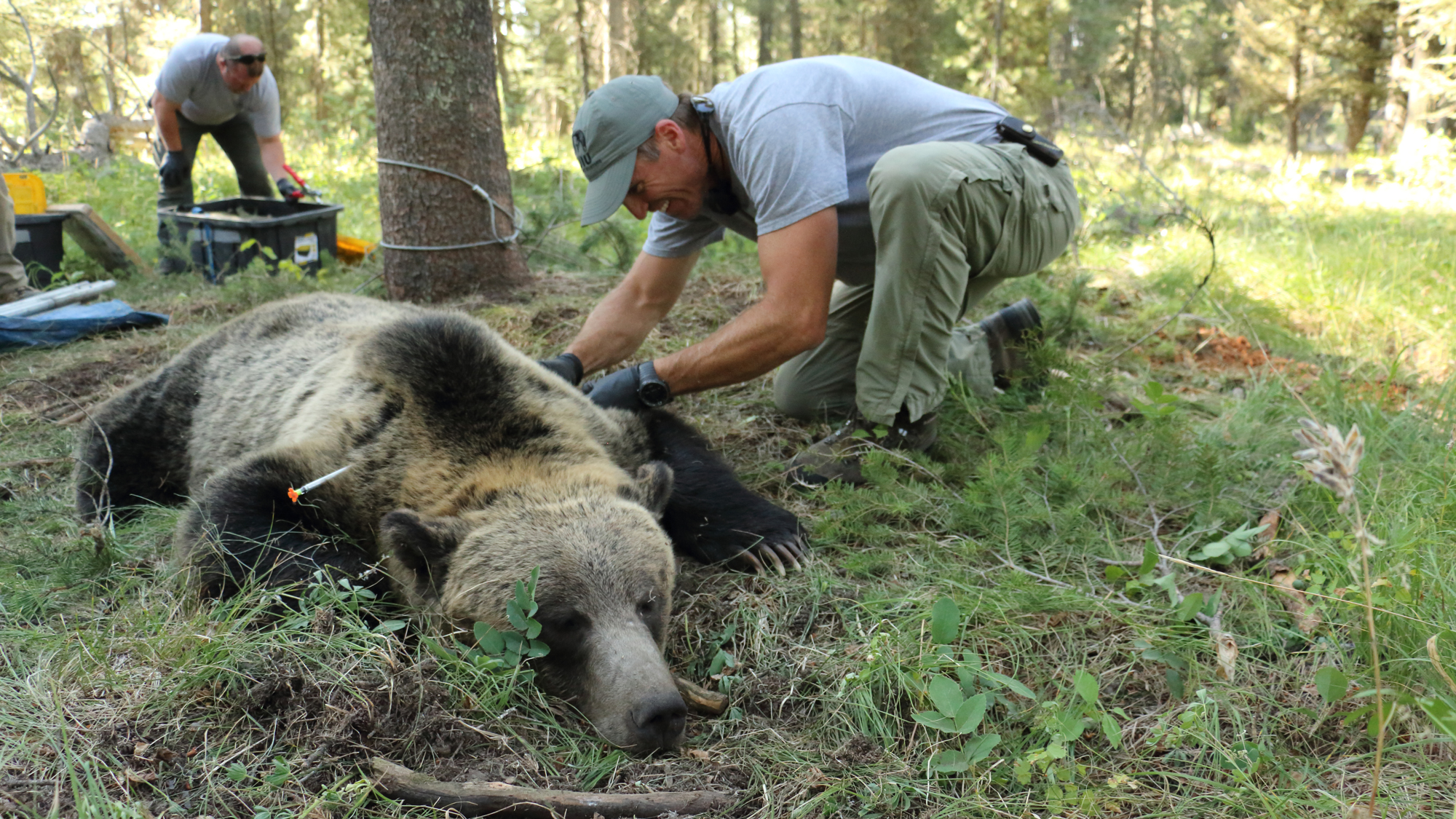
Younger bears metabolize medicine faster than older bears. In some cases, much faster. That’s the case with No. 1225, but another dose does it. In three minutes, it’s lights out again for the bear and back to work for us. The biologists have just enough time to attach the collar and put the 300-pound bear in a trap to rest until he revives.
“It’s like us on cough syrup. Our senses might not be the most alert and we might be a little woozy,” Hendricks says. “It’s the same for this bear recovering and we don’t want to turn the bear out on the landscape in that condition. It’s both for the bear’s safety and for human safety.”
We return at dusk. Bear 1225 is sitting up in the trap. Its head hangs down, but it’s alert without looking at us directly. Bear 1225 is not happy about the situation.
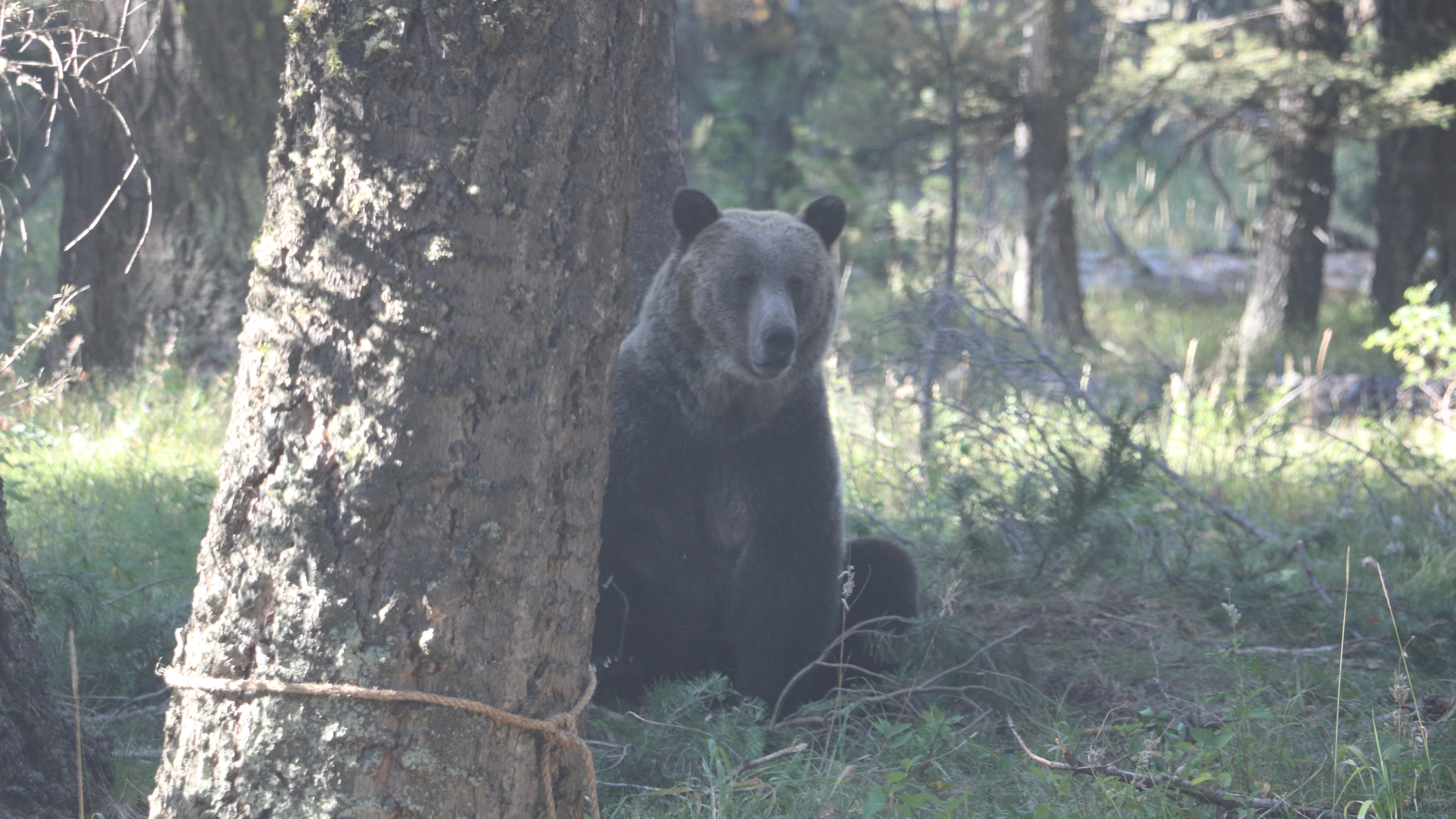
A pulley system attached to the truck opens the trap door. Grizz 1225 is free to run, but he doesn’t. Another difference between youngsters and seniors. Newly caught grizzlies hesitate. They don’t know what just happened. They don’t know what is around their neck and they don’t know what’s waiting outside the trap. Bears caught often know the routine; eat the road kill, sleep a while, wake up with a necklace, run as soon as the door opens.
“The distance these bears cover and why they do it continually raises so many questions,” Hendricks says. “We always think we’re starting to get a glimpse of what they’re doing and then something new comes up and it blows your mind.”
Once on the move, the bear’s GPS collar sends a signal every 105 minutes. Grizzlies in the Greater Yellowstone Ecosystem can easily wander more than 1,000 miles in a summer. Tracking their movements helps in the game of endangered species recovery, which for grizzlies is decades in the making. There are an estimated 800 to 1,100 grizzly bears in the GYE, which includes Yellowstone National Park and Grand Teton National Park plus portions of Idaho, Montana and Wyoming. About 10 percent of those bears wear GPS collars.
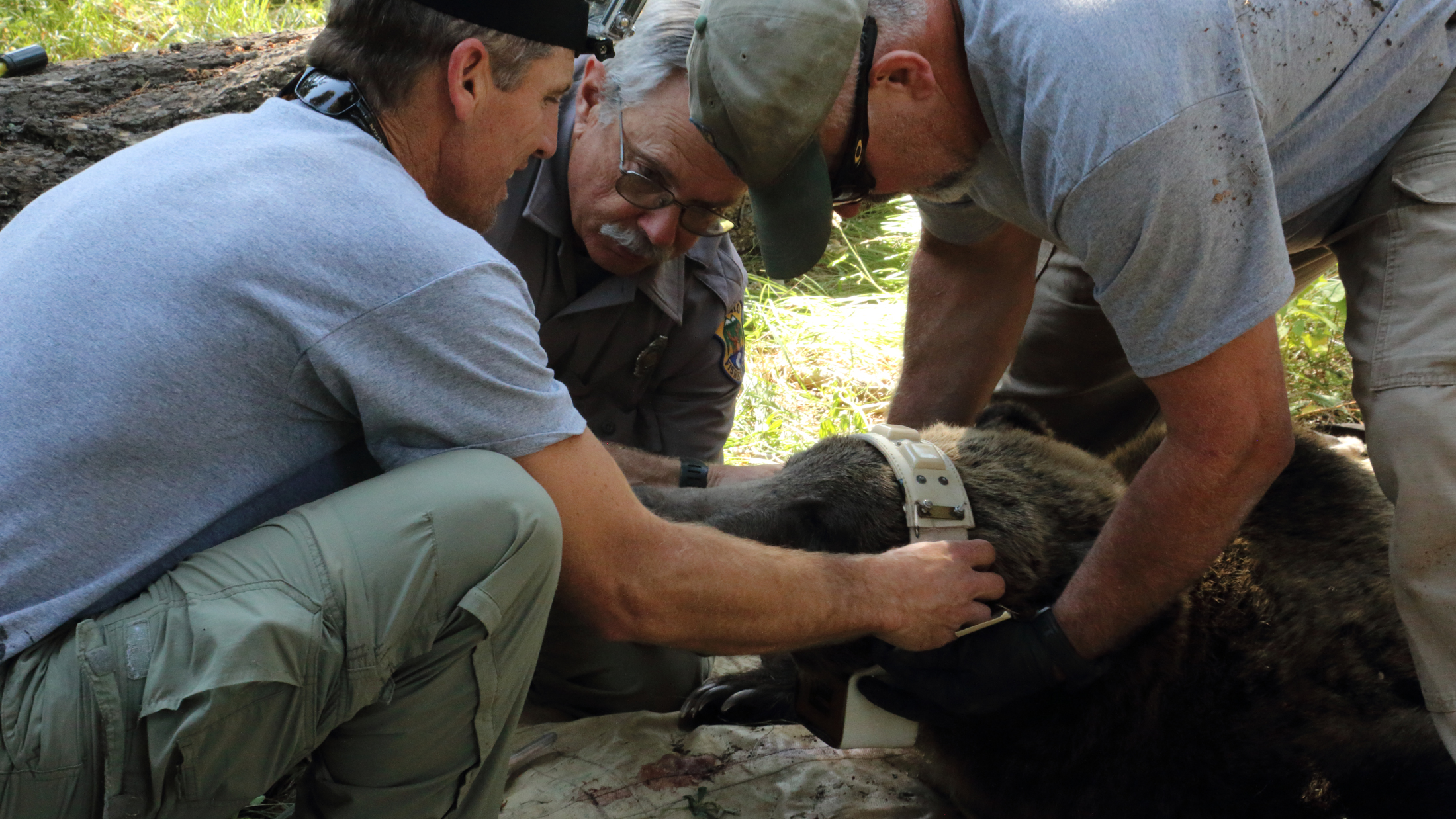
A lot of long, frustrating and smelly days go into collaring grizzlies. Idaho alone spent two months trapping grizzlies in 2016 and only put out three new collars successfully. Grizz 1225 is one of those bears. He’s young, but he’s smart. He dodges snares and still gets dinner. He doesn’t like traps, he doesn’t like shots and he’s quick to rise up when I wish he’d play dead.



I am so obsessed with bears. I love learning anything and everything about them. They are the most beautiful powerful and amazing animals.
I was very excited to see the video of the grizzly getting weighed and it’s gps collar on and it starting to wake up.
Thank you so much for sharing and doing the work with bears that you do.